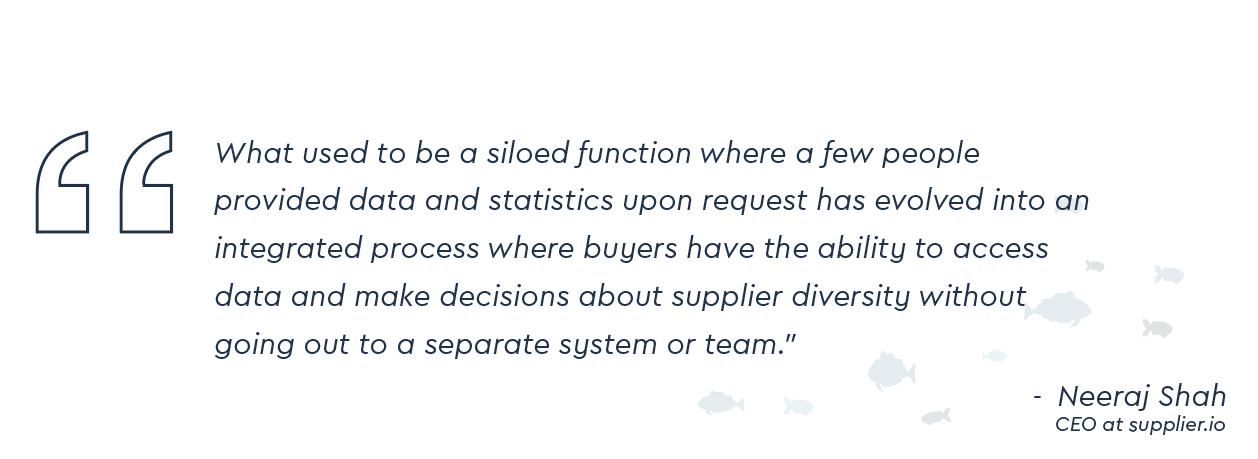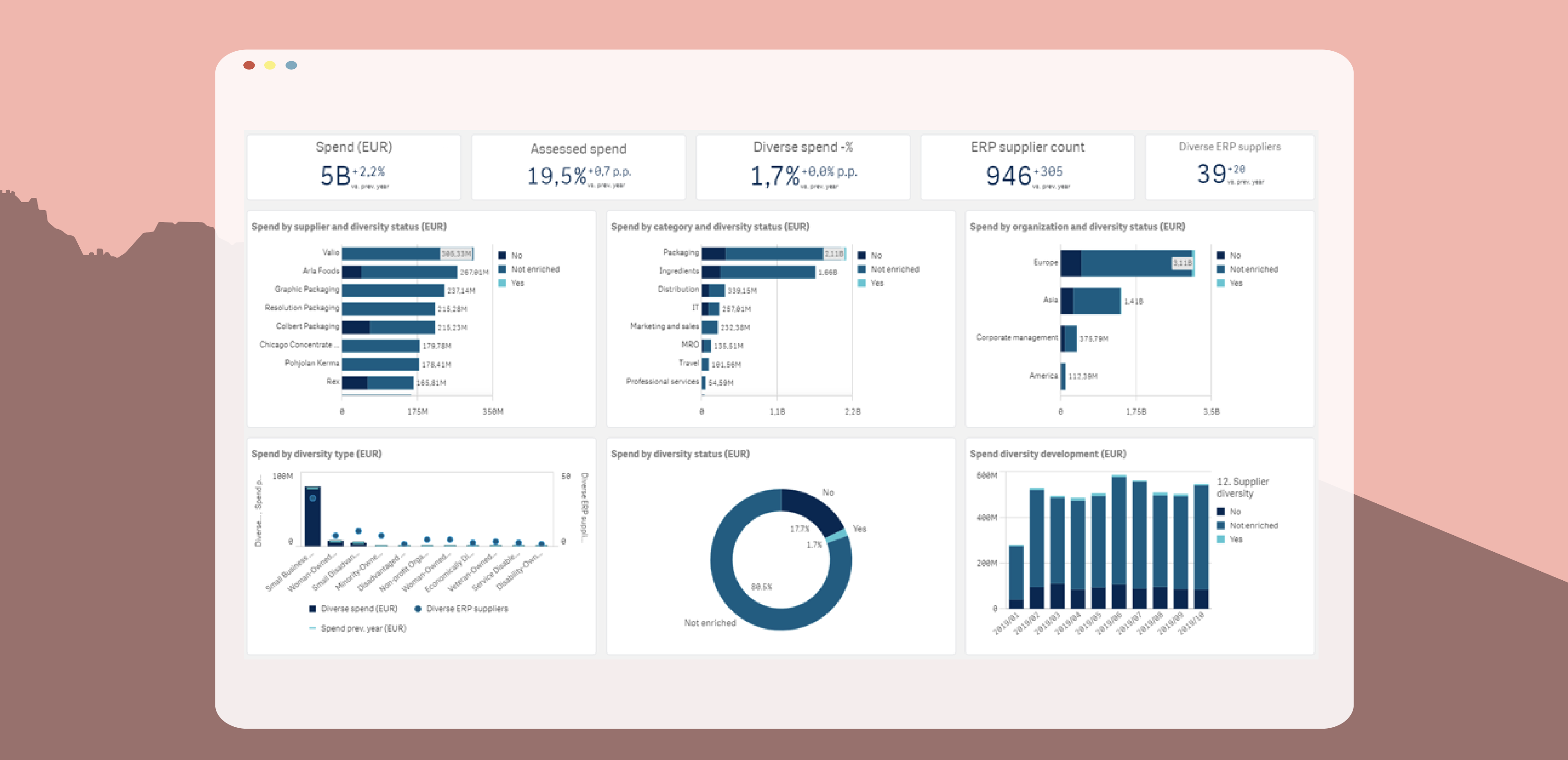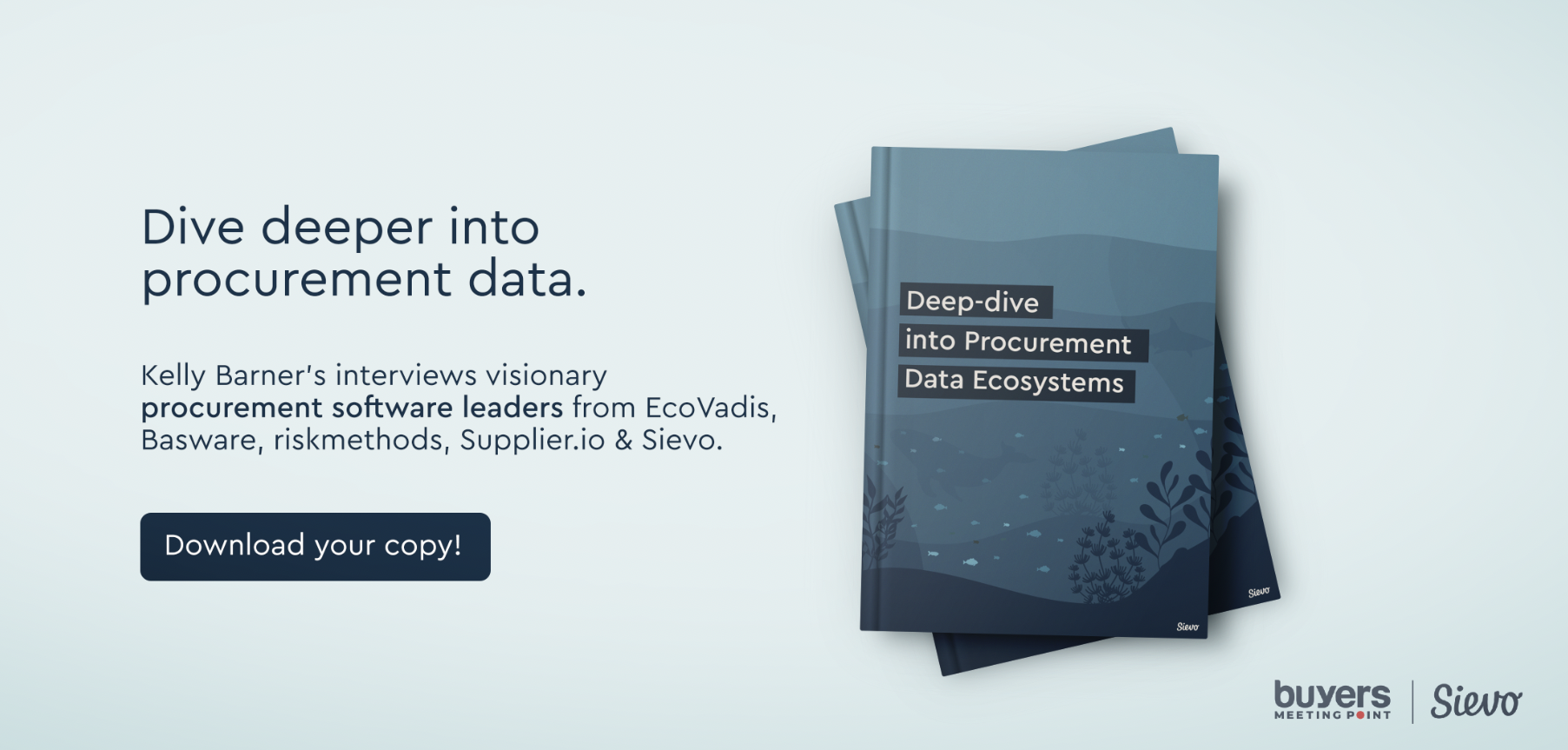
Thought Leadership
Supplier Diversity: Urgency, Scalability, and Ownership

Kelly Barner • Feb 24, 2021

Procurement is rapidly evolving into a strategic function entirely powered by data-derived insights. Access to high-quality, actionable data determines not only how valuable procurement is to corporate profitability, but also the extent to which they can measurably contribute to increased market share and competitive advantage.
Our focus in this article is supplier diversity, based on a conversation with Neeraj Shah, CEO of supplier.io. The conversation opened with a look back at the surge in corporate urgency around supplier diversity observed in 2020 before moving on to the value that companies see from increased diversity and insight into how leadership teams can ensure their diversity programs – both new and mature – remain authentic and sustainable.
A Break-out Year for Supplier Diversity
While supplier diversity initiatives are hardly new to large enterprises, they have traditionally been led by a small team of people who manage their own siloed data and influence the purchasing process from the outside. With high-visibility companies like Facebook and Walmart increasing their target metrics for diversity programs in response to an elevated worldwide focus on minority communities, executive teams have taken notice across the board.
The most important outcome from this mindset shift, according to Shah, is the understanding that diversity silos have to come down, including both people and data. “The increased visibility has made supplier diversity initiatives more integrated, not just within the procurement function, but through increased visibility and urgency at the C-level with executives calling for progress tracking and statistics.”
The key to ensuring that today’s urgency translates into sustainable long-term impact is making supplier diversity data available and visible where the buyers are, rather than asking them to pursue that information in a separate, dedicated location. This accessibility requires a whole host of procurement technologies, including contract management, supplier databases/discovery sites, strategic sourcing, tail spend, spend analysis, and supplier performance management. Each platform in the procurement ecosystem serves a different business need. Consistently highlighting data and statistics throughout is the most effective way to turn diversity intent into diversity action.

Understanding the Value of Diversity Suppliers
Capturing and articulating the value of a diverse supplier base will always be company specific, because the business case and the associated performance metrics of a supplier diversity program go hand-in-hand. The three primary reasons Shah sees large enterprises motivated to invest in their supplier diversity programs are compliance, customers, and culture or corporate social responsibility (the 3 “C”s). Buying into any (or all) of the three requires procurement to take a very expansive approach to the scope of value they are able to deliver.
Compliance:
Government contractors or subcontractors are required to identify, track, and report on their diversity spend in order to win or keep contracts. This is a broad category of diversity identification, as federal programs often allow suppliers to self-identify as diverse rather than going through traditional third-party certification processes.
Customers:
This certainly applies to B2C companies, but an emphasis on diversity is growing in B2B as well. Every company is someone’s customer, and large enterprises are digging into their supply chains to better understand the level of diversity spend in tier 2, tier 3, of the supply chain (etc.). The increasing use of externally released reports to communicate investments in supplier diversity is rapidly changing organizational behaviors to further encourage their inclusion.
Culture / Corporate Social Responsibility:
Even the largest enterprise is a member of one or more communities. Ensuring that everyone in that community has an opportunity to participate in the procurement process is a critical step forward for traditionally under-leveraged suppliers and builds brand value with B2B and B2C consumers alike. Additionally, diversity and inclusion in all forms, including supplier diversity, is becoming an expected value by companies’ employees and customers. Companies can no longer afford to ignore these.

One of the chief obstacles to diversity programs’ growth in the past was the belief that they were associated with additional cost or risk. Diversity suppliers can often deliver the same – or greater – savings and innovative value as other suppliers, and there should not be an expectation to the contrary. As Shah explains, “Most people find that when they bring in diversity suppliers, they find better value, better cost, and innovative solutions. This is often because they are including suppliers that would not otherwise be part of the sourcing process. As a result, diverse companies will often compete more innovatively and aggressively to win business.” If there is any concern a large enterprise may have about diverse suppliers, it is when they are smaller than public or larger incumbents which may introduce challenges around their ability to scale sufficiently to meet and keep up with demand.
Positioning Supplier Diversity for Long Term Success
Organizations that see the expansive value of supplier diversity and put that information directly into the natural workflow of enterprise buyers have opportunities to grow and protect their program in the long term. Two key ways to do this are through visibility dashboards and deliberate program ownership structures.
Actionable Visibility
The availability and sophistication of supplier diversity data, reporting, and dashboards has improved significantly over the past couple of years. Bringing diversity data into procurement analytics makes it actionable at every stage in the spend management process, from supplier identification through contract management. Easy access to diversity spend or concentration by business unit, spend category, or geography makes it abundantly clear where the opportunities for growth and maturity lie. Even advancements towards self-guided buying have increased the amount and percentage of diversity spend, as individual employees are often more willing to select a supplier that has a diversity certification than a large consensus-based sourcing team. No best-of-breed ecosystem can be considered comprehensive if it does not meet enterprise-wide data requirements in a cohesive fashion. If supplier diversity is a top executive priority, it must also have representation in spend management processes and technology.
Empowerment through Ownership
Chief Procurement Officers have a role to play in expanding supplier diversity initiatives, but no function represented in the C-suite is exempt. This starts with education that drives understanding and must be reinforced with targeted goal setting and transparent progress tracking. In this way, diversity initiatives will be poised for widespread and continued success over the next 3-5 years. This is especially true in organizations that systematize their diversity data, consistently putting it in front of decision makers and ensuring that everyone in the enterprise feels ownership and pride in their ability to impact the extended community through supplier diversity.

In conclusion…
Procurement’s steep maturity curve and continued investments in digital transformation make them integral to every enterprise objective and initiative. Transformation is also further accelerating the integration of supplier diversity data and targets with other spend management efforts. All data sources and analytical technologies used by procurement must incorporate diversity alongside efforts to promote sustainability and risk awareness. By putting data and metrics in front of each enterprise buyer, procurement makes it possible for each individual to do their part to promote supplier diversity.
About Deep-dive into Procurement Data Ecosystems with Kelly Barner
This article series was written by Kelly Barner, top procurement influencer and owner of Buyers Meeting Point.
All companies require data in order to function, but in today’s hyper-connected world, large enterprises have specific additional needs around technology-enabled scalability and standardization that smaller organizations may be able to get by without or supplement with manual alternatives. These multi-faceted data challenges exist within and outside of their procurement operations.
In order to explore and articulate the multi-faceted data requirements of large enterprises, we reached out to several leading companies to gain unique insight into the criticality of linking internal data and third-party data via robust procurement analytics capabilities. The result is a thoughtful article series that explores fresh ways procurement leaders can turn data from a challenge to an opportunity.
Dive deeper into procurement data in the new ebook featuring Kelly Barner’s interviews with visionary procurement software leaders from Basware, EcoVadis, riskmethods, Supplier.io and Sievo.
Open Positions
Welcome to explore our open job opportunities around the world
- Position
- Location
- Apply Before


